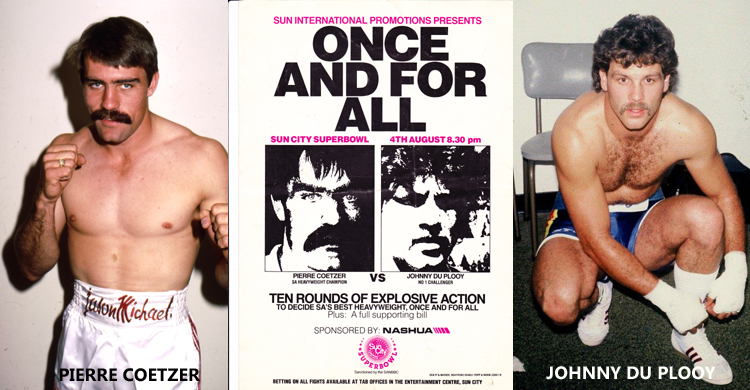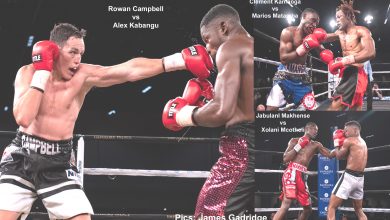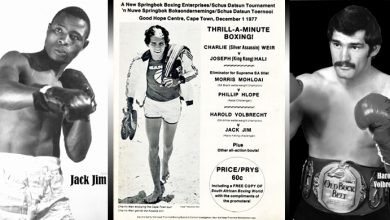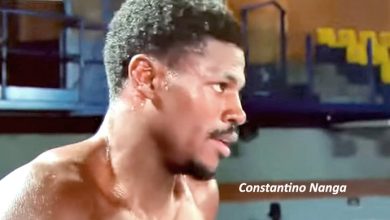Pierre Coetzer TKO 2 Johnny du Plooy – 4 August 1990

South African heavyweight boxing’s most heated rivalry finally came to a head when Pierre Coetzer stepped into the ring at the Sun City Superbowl to face Johnny du Plooy.
The two circled around each other for years as their careers developed in separate directions. Du Plooy had several impressive wins on the international stage over the likes of David Bey, James “Quick” Tillis and Mike Weaver but there were also disappointments. After being ahead on points, he got tired and promptly quit against Renaldo Snipes and when he challenged for the inaugural WBO world title, he was unceremoniously knocked out by underrated Italian, Francesco Damiani. He did, however, put himself back in the win column, winning a ten-round decision over former IBF cruiserweight champion, Lee Roy Murphy, in his previous fight.
Outside the ring he had the reputation of having less than stellar training habits and a love for the fast life, but he still had a very respectable 23-3-1 record with 19 knockouts and one thing was for certain: the undoubtedly talented du Plooy could hit. He put bums in seats and brought the excitement wherever he went.
The quiet, unassuming Coetzer was the polar opposite: He was a workhorse in the gym, and you would be hard pressed to find a fitter heavyweight anywhere in the world. He had the heart of a lion and won the South African title six years earlier in a war against Bennie Knoetze where he dragged himself off the canvass several times to knock out his foe in the third round. Although du Plooy was regarded as the harder puncher, Coetzer had dynamite in his left hook which was his money punch and had compiled an impressive 31-2 record with 22 knockouts. Earlier defeats against Bernard Benton and Ossie Ocasio were both avenged in style.
“This was the hardest fight I ever made,” remarks promoter Rodney Berman. “Not only were they paid a record purse for a local fight, I also had to commit to future fights for both winner and loser.”
The fight itself only lasted two rounds but nobody went home disappointed. When the bell rang the heavyweight version of Hagler-Hearns ensued. Coetzer wasted no time in going after du Plooy, throwing his left hook with bad intentions but Du Plooy stepped out of the way and started nailing Coetzer time and again with vicious straight rights, one of which opened a bad gash above his left eye. Things were not looking good for Coetzer when the bell rang to end the round.
A bleeding Coetzer, no doubt sensing the urgency of the matter, stormed out of his corner at the start of the second and nailed du Plooy hard with several left hooks. Du Plooy exploded into a counterattack, a straight right depositing Coetzer on the seat of his pants. Ironically, that would prove to be the final nail in the coffin for du Plooy. Coetzer was up quickly, the knockdown awakening the animal in him. He went right back on the attack, walked through a searing uppercut and backed du Plooy to the ropes where a combination punctuated by a left hook followed by a right sent du Plooy to the canvass in a dramatic turnaround. Du Plooy, often criticized for a lack of heart, showed plenty of it on the night and made it back to his feet. Coetzer, however, smelled blood and wasted no time sending du Plooy down again with a vicious double left hook. Du Plooy somehow staggered to his feet but referee Stan Christodoulou had seen enough and waved the fight over at the 2:46 mark, ending the memorable brawl.
Coetzer recorded several more wins and in his final three fights, gave Riddick Bowe, Frank Bruno and George Foreman stern arguments before succumbing to late round stoppage defeats. All three those men went on to win, or in Foreman’s case, regain the richest prize in sport.



